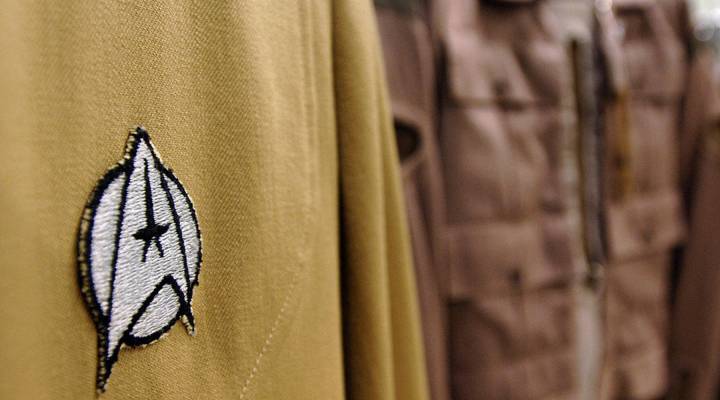
Let’s do the number: ‘Star Trek’ and the 47 conspiracy
Share Now on:
Let’s do the number: ‘Star Trek’ and the 47 conspiracy

“Star Trek” turns 50 on Sept. 8, and instead of buying it a fancy sports car, our mission is to boldly go down the “Star Trek” rabbit hole, or rather, wormhole, and nerd out about the show to mark this milestone. We spoke to fellow Trekkies, including a writer, a showrunner and a scientist, about why the series matters to them. Check out the rest of our 50th anniversary coverage here.
Numbers play a crucial role in the vast, fictional universe of “Star Trek.”
Starships can travel faster than light at factors of Warp 1 through 9, dates are identified through a long series of numbered “stardates,” and even the series’ iconic and over-the-top scientific explanations, or “technobabble,” relied on the strength of numbers to give them legitimate weight. (My favorite technobabble is still “14 kiloquad interface modules” and “25 bilateral kelilactirals.”)
But there’s one number in the “Star Trek” universe that took on a whole life of its own: The number 47.
Beginning from “Star Trek: The Next Generation’s” run, the number 47 and various derivatives of it began appearing multiple times through each season. The following are just a small sample of the number 47’s appearance in “The Next Generation”:
- In the episode “Family,” Captain Jean-Luc Picard drinks a ‘47 wine from his brother’s vineyard.
- In “Darmok,”the alien word “Darmok” appears 47 times in the USS Enterprise’s internal library
- In “The Loss,” the Enterprise is scheduled to arrive in the T’lli Beta sector in six days, 13 hours, 47 minutes.
- In “Frame of Mind,” Cmdr. William Riker is a patient of Ward 47.
- In “Time’s Arrow,” Capt. Picard uses a phaser setting of 0.47 to open a time portal.
- In “Descent,” a holographic projection of physicist Stephen Hawking playing poker shows he has a hand of four 7‘s, which wins him the game.
The 47 “conspiracy” can be attributed to “Star Trek” writer and producer Joe Menosky, who started sneaking 47 into his scripts during his run as a writer on “Star Trek: The Next Generation.” The reason? Menosky is a graduate of Pomona College in Claremont, California, where the number 47 is touted by student and staff as the “quintessential random number” of the universe. This inside joke caught on with other “Star Trek” writers, eventually leaking into the series’ other spinoffs “Voyager” and “Deep Space Nine.”
Menosky is slated to return to the franchise as a writer for the upcoming “Star Trek: Discovery” series on CBS, which means we might see the return of 47 soon.
There’s a lot happening in the world. Through it all, Marketplace is here for you.
You rely on Marketplace to break down the world’s events and tell you how it affects you in a fact-based, approachable way. We rely on your financial support to keep making that possible.
Your donation today powers the independent journalism that you rely on. For just $5/month, you can help sustain Marketplace so we can keep reporting on the things that matter to you.


















